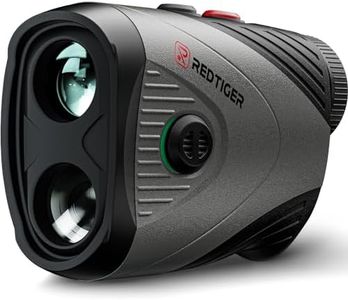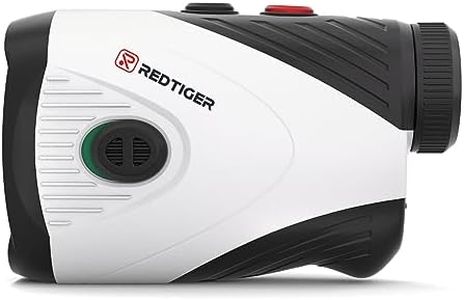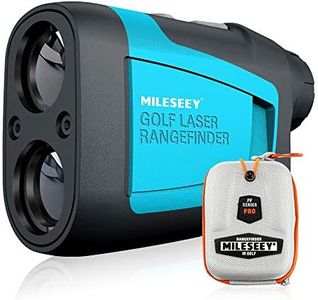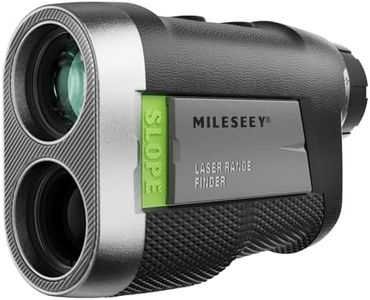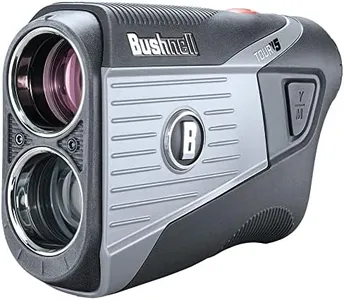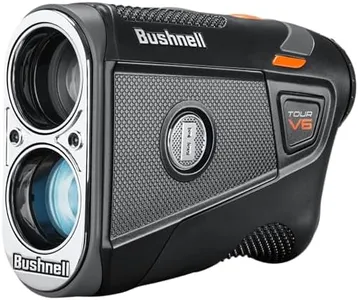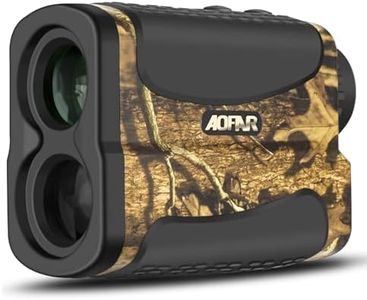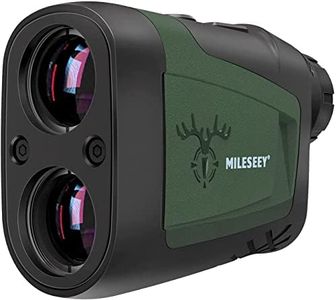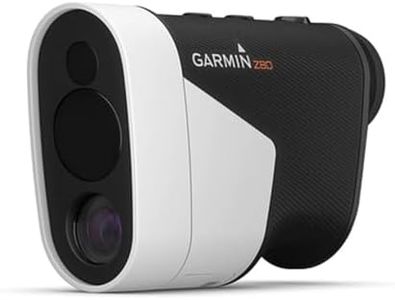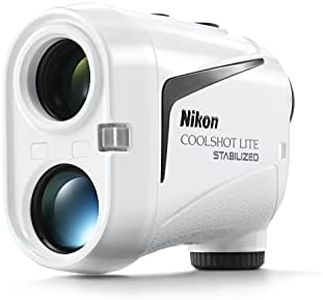We Use CookiesWe use cookies to enhance the security, performance,
functionality and for analytical and promotional activities. By continuing to browse this site you
are agreeing to our privacy policy
10 Best rangefinders
From leading brands and best sellers available on the web.Buying Guide for the Best rangefinders
When choosing a rangefinder, it’s all about understanding what you need it for – whether that’s golfing, hunting, outdoor sports, or even photography. A rangefinder helps you measure the distance to a target point, which can be crucial for accuracy on the golf course, in the wilderness, or other precision tasks. The key is to match the rangefinder’s abilities to your typical conditions and intended uses. By focusing on the specs that matter most for you, you’ll end up with a tool that feels like it was made for your specific needs.Maximum RangeMaximum range refers to the farthest distance a rangefinder can accurately measure. This is important because you want a device that covers the distances you commonly deal with, plus some margin for variety. Basic rangefinders may only measure a few hundred yards or meters, which can be fine for golf or close-range activities. Those designed for hunting or long-range use often measure up to 1,000–2,000 yards or more. If you mostly use your rangefinder on a golf course, a shorter range is perfectly adequate, but if you’re a hunter or do long-distance shooting or surveying, consider a higher maximum range.
AccuracyAccuracy tells you how close the device’s reading is to the true distance. It’s crucial because even small measurement errors can make a big difference, especially in golf or shooting sports. Accuracy ratings are typically within ±1 yard/meter, though more premium models may go down to half a yard or less. If your application demands precision – like target shooting or competitive golf – look for the highest accuracy possible. For casual use, a slightly less precise model is often fine.
MagnificationMagnification refers to how much the rangefinder can zoom in on your target, making it look closer in the viewfinder. Most rangefinders offer between 5x and 7x magnification. Higher magnification can make it easier to lock onto a distant target, but may also amplify hand shake, making the target harder to keep steady in the viewfinder. For general use, 5x is common and usually sufficient. For longer distances, a bit more magnification can help, but always consider your ability to hold the device steady.
Size and WeightSize and weight determine how portable and easy to handle your rangefinder is in practice. Compact, lightweight models are great for golfers or hikers who want to carry less, while larger models might offer more features or better stability but can be bulkier to manage. If you’ll be carrying the rangefinder for long distances or using it with one hand, aim for a lightweight, ergonomic design. If portability matters less, you can consider a larger, possibly more robust model.
Display and ReadabilityThe display is what you see inside the eyepiece, including distance readouts and sometimes additional info like angle or battery status. Clear, bright displays make it easier to use the device quickly and accurately, especially in bright sunlight or low-light conditions. Some models have illuminated or adjustable displays for varied lighting, which can be a real help outdoors. Consider where and when you plan to use your rangefinder – if you’re often out at dawn or dusk, or in bright midday sun, prioritize readability.
Special Features (e.g., Slope Measurement, Scan Mode)Special features can improve usability or accuracy in specific situations. One popular feature is slope measurement, which accounts for elevation changes when calculating distance – useful in golf and hunting on hilly terrain. Scan mode allows for continuous measurements as you move the device across multiple targets, saving time when you need to quickly check several distances. Think about whether these features match your activities: for example, golfers may love slope mode, while hunters might want a scan or tracking feature.
Water and Weather ResistanceWater and weather resistance means how well the rangefinder survives exposure to rain, fog, and dust. If you only use your device in dry, clear conditions, lower resistance is fine. But if there’s a chance of rain, snow, or dust, look for models rated as waterproof or weatherproof. For outdoor sports like hunting and hiking, this can be essential to protect your investment and make sure your tool works in any situation.
